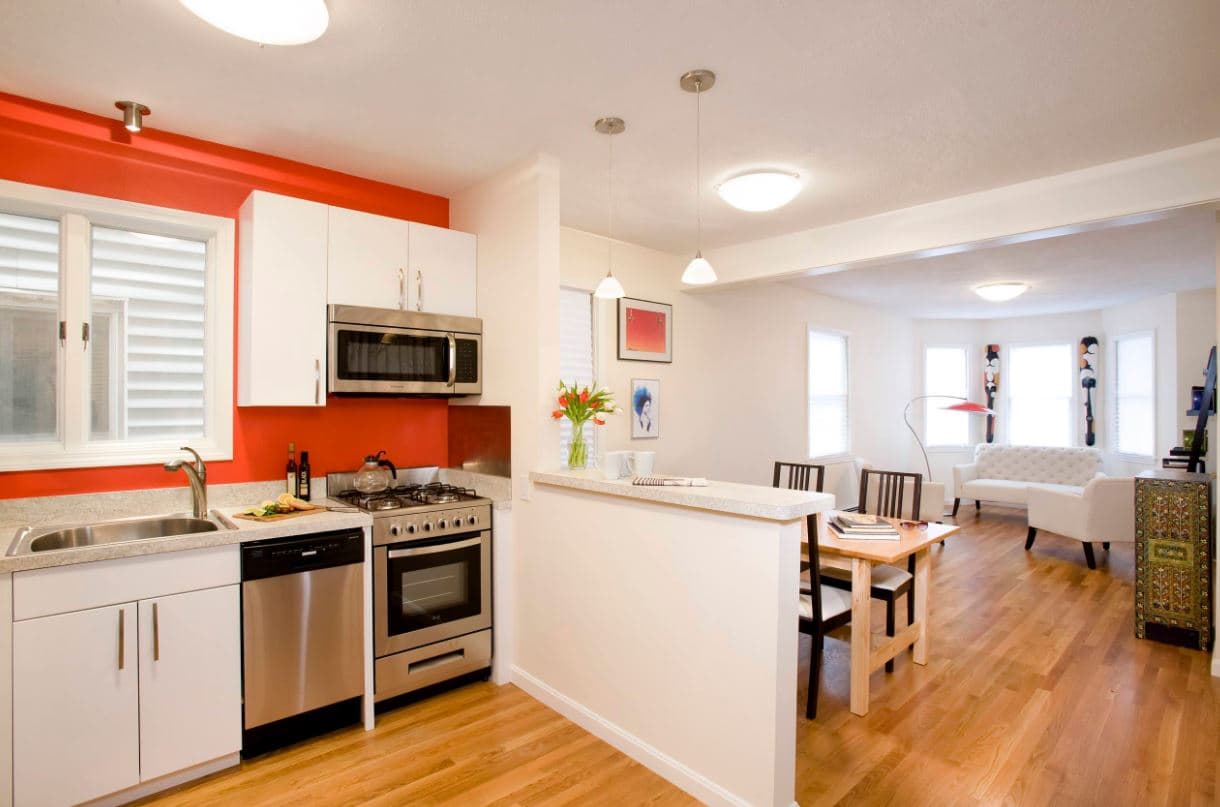
Pony walls are short walls typically used to section off expansive spaces. The pony wall, sometimes known as a half wall, is a lower-height divider. These partitions are around 3 feet high. Regarding room separation and home decor, the pony wall is a winner. The half-wall method of building involves the usage of many materials. However, the definition of a pony wall remains consistent regardless of context. Let’s check out pony walls uses and design in depth.
What is Pony Wall?
Pony walls are short walls usually used to divide large, open spaces. A pony wall is a low wall that separates two rooms. Another name for it is a half wall. The height of this wall is relatively modest, as it is not built from the ground up. These partitions are great for dividing a large room into distinct zones without closing it off completely. These exterior walls, including foundation walls, get structural covering, such as plywood, like any other wall.
The Brief History of Pony Walls Uses and Design
In the 1970s, non-structural walls were more common than they are now. Pony walls can be dividers between rooms, safety walls, or extra storage. Walter Clydell, a farmer in Nebraska, came up with the pony wall, also called a “cripple wall,” at the end of the 19th century. Clydell wanted his horse stable to have short walls so he could see into the stalls better. However, pony walls became popular in US homes in the 1960s.
Pony Wall vs Knee Wall
Sometimes, the term “knee wall” is used interchangeably with pony wall, although the two have several key distinctions. While knee walls serve an architectural role in the home, pony walls are more of an aesthetic choice for dividing rooms. Knee walls are less than three feet tall and are commonly used to support a countertop or the rafters in an attic. A knee wall is typically a load-bearing structure, while a pony wall isn’t. However, load-bearing columns or pillars in the room can occasionally be included in the design by constructing pony walls around them.
Uses of Pony Wall
The pony wall serves many purposes in a house, such as for storage, separate rooms, or decoration. Look at some examples of how pony walls can improve the function and look of a room. Here are some of the most common pony walls uses and design:
Pony Wall Bookshelf

You can put books on the pony walls in two different ways. One option is to remove the top of the wall and turn it into a wall shelf by leaving the slots out. The second way to store your books is to add a shelf to the top of the pony wall. It will boost your interior design.
Bathroom Separator

Pony walls in bathrooms can help keep the toilet area private. In the same way, a pony wall with a glass ceiling in the shower area makes it look different.
Partitioned Entry Way

You can build a pony wall between the main living area and an entrance as a room divider to make the mudroom. Shoes and other things for the outdoors should be kept behind the wall. In this way, you won’t be able to see them from the living room. Also, this wall guides people from the front door to a big part of your house.
Staircase Pony Wall

It gives you a solid surface to mount cladding and more options for hanging wall decor. By providing a steady background for accessory installation, this type of structure prevents people from falling off the corner while using stairs.
Children’s Space
Pony walls can give kids a separate area to play in due to their low height. They can also divide different rooms to make a play area in other places.
Great Room Separator
When designing an interior for a home with an open floor plan, understanding where to commence the process requires careful consideration, particularly regarding space optimisation. A pony wall serves as a practical solution, effectively delineating distinct areas within the open layout.
Kitchen Breakfast Bar

Traditionally, the most prevalent usage of pony walls has been to separate the kitchen from the dining area. It is a place to set plates, an extra work surface, and a divider between the dining room and kitchen.
Decorative Wooden Slats
A wall of vertical wood slats can split up a wide-open room. It adds to the room’s sense of privacy and is a stylish focal point that complements the cutting-edge decor.
Conclusion
On the other hand, Pony walls are more accessible to set up. Putting them in your house should be easy if you’re handy around the house. Pony walls uses and design are becoming very popular, and many designers use them. If planned cleverly, one can use their versatility in various situations and places.
Image courtesy : Image 1, Image 2, Image 3, Image 4, Image 5, Image 6






























